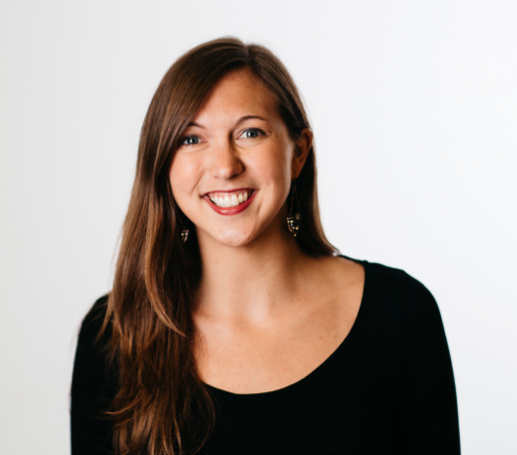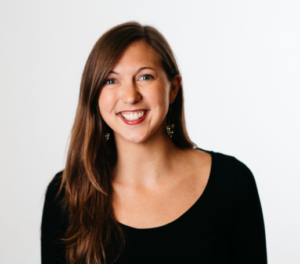
It’s 4:30 a.m. on November 29, 2012 outside Grand Central Station in New York City.
Lisa Boyd is protesting alongside fast food workers for their right to receive a living wage.
In 2012, Lisa was freelancing at Purpose, a socially-focused consulting firm that uses new media to create social movements. Her role was to create social media buzz for the #FightFor15 campaign.
So how do you go from social media marketing to participating in the #FightFor15, now an international movement that has spread to over 300 cities, and then from there, proceed to co-founding TMI, the consulting agency for DoSomething.org?
Drive, determination, skill…and clarity of purpose.
In this interview, Lisa shares her career transitions from working in Africa to co-founding TMI., and she provides the steps you can take right now to identify your mission whether you’re in social impact, an artist or you work in fashion.
Meet Lisa Boyd.
Where are you from, and where did you grow up?
I grew up in NJ, outside of the city. I went to Lehigh University, and studied international relations.
In high school I wanted to take a journalism course, but I ended up in an international relations course instead because it was the only thing that fit in my schedule—and I loved it.
In college, I focused on international development and studied abroad in Tanzania. After researching the country for a class, I found out that one of the biggest issues was sustainability of community water systems. In the central region of Tanzania at that time, 67 percent of boreholes were broken and 30 percent of those broke down within the first two years of being installed. I was super frustrated by that fact and wanted to improve it in some way, so I applied for grant funding to do research on water point functionality after my study abroad semester.
Using findings from that research, I came up with a process during my senior year of college to address the issue using a social enterprise model. I then applied for more grant funding and moved to Tanzania immediately after graduating to implement those programs.
Can you think back to your 22 year old self? Tell us about your first job and where you started out.
At 22, I got on a plane to Tanzania with $20K in grant funding, but no clear idea of where I was going to live or who I was going to work with when I got there.
What I really wanted to do was break the system. I created a whole model around privatization of the water structure, which ended up being successful but unscalable. It took me a whole year to work with only six villages, so I called it quits.
Not only had I run out of grant funding (and hated the process of applying so much that I wasn’t willing to do it again), but I also didn’t feel like the program was as successful as I wanted it to be—I didn’t have a solution that could break the status quo in the NGO sector.
What was next?
I went to work for a nonprofit called Engineers Without Borders Canada, working for their team in Malawi. They were focused on building capacity of local governments, while also doing national-level policy influencing to improve funding structure in the water and sanitation sector. I was there for a little over a year, and it was really fantastic; however, there were a lot of political issues that led to me not being able to be as effective as I would have liked.
I went back to the U.S., and I landed a gig freelancing at Purpose, a socially focused consulting firm that uses new media to create social movements. I was helping them with strategy, while getting a crash course on the working world in New York.
Before Purpose, I’d say in a job interview: “I know how to run community training programs in rural villages, and I speak Swahili.” And the feedback I’d get was…“That’s not really helpful in New York.”
Purpose taught me the basics of what it means to drive social change in an American context instead. Soon after, I was looking for a full-time position and got the opportunity to co-found TMI. That was four years ago, and I started the agency together with our now-CEO.
TMI helps other brands, both for-profit and nonprofit, tap into DoSomething.org’s expertise with driving young people to take action. Our strategic consulting helps improve those companies’ programs while simultaneously bringing in untied funding for DoSomething.org. I now lead our strategy team here.
Having the opportunity to co-found a company is pretty incredible. Can you tell us a little more about how this opportunity came about?
I learned a lot at Purpose but left to find a full time gig. I was looking at all sorts of things in the New York City social sector, and ended up applying to a role on the Campaigns Team at DoSomething.org that would specifically focus on domestic homelessness and poverty.
I went through multiple round of interviews for that position, but then in my final interview, the COO at the time (now our CEO), Aria Finger, came in and threw me a curve ball—she wanted to hire me to help her start an internal consulting agency.
TMI was Aria’s brainchild, but she needed support to make it a reality. She hadn’t figured out the business plan or services yet—she was explicit about that being something that we would figure out together if I accepted the offer.
I was super excited about the opportunity to not only work at DoSomething.org, but also to be able to build something new and exciting inside of the organization. That’s how I ended up as the first staffer at TMI!
What I hear you saying is that you were really open to new experiences. However, you must have also made quite an impression on the team. What do you think made you stand out from other candidates?
Fair enough. Given your career path and transitions, what does identifying your mission mean to you?
I define your mission as whatever excites you.
I don’t think that people have one single mission—there are lots of things that can excite a person. The fact that I got super excited about water and sanitation issues was very random since I had no background in that field, but I saw a major problem and was excited by the opportunity to fix that.
Five years ago, I would have never believed that I’d be working in consulting today, but I love it.
You can have different missions throughout your life, as long as that’s the thing that gets you excited in the moment.
So what is your mission, the work you want to do?
It falls in two areas. First, trying to solve problems through sustainable business models.
In Tanzania, for example, I was trying to fix water point sustainability issues through a for-profit business model. I’m really driven and excited by what’s happening today in social enterprise—businesses that are truly driven toward social impact like Sanergy, a Kenya-based company that’s working on the issue of sanitation in slums by making toilets affordable and accessible.
My second mission is to improve the way funding is provided in the nonprofit sector. In the for profit world, companies spend 100 percent of their time and effort on doing a better job on the service/product they are providing. In the nonprofit world, however, companies often spend only 30 percent of their time running programs and 70 percent writing grants, which is infuriating to me. You’re not able to innovate or be creative in a model like that!
This is what excites me about TMI. Not only are we able to provide great consulting opportunities, we’re also able to bring in untied funding to DoSomething.org to enable them to be more creative and to take risks.
What specifically has led you to identify these two areas? Can you recall any experiences you had that pushed you to your mission?
My experiences working for nonprofits both abroad and in the US made me extremely frustrated about the constraints that funding structures place on nonprofits. If organization were provided more flexible grants/donations and/or were able to sustain themselves, they could be so much more creative and innovative.
What has been the result of doing mission-driven work?
From a personal perspective, being mission driven means that you don’t feel like your work is really work. Of course there are rough weeks, but if you can say, “I love what I do” it makes a massive difference for your mental health and personal well being. I think that it genuinely makes you a happier person.
I also find it super rewarding to see something that you’ve been part of grow and spread its wings.
For example, at Purpose I was part of the initial campaign in partnership with the SEIU to fight for fast food workers to receive a living wage. Most of my work on that project was focused on thinking about how to create social media buzz around the issue.
However, I also stood outside of a McDonald’s near Grand Central at 4:30 a.m. when the very first fast food workers walked out to protest, and then protested beside them all day. The “Fight for 15” is now a national movement that has been referenced by Obama and is seeing major success. It’s really amazing to look back on that early morning outside McDonald’s and realize that I played a small role in making that movement come to life.
One final note about doing mission-driven work is that you get the chance to work with people who are actually passionate about what they do. I don’t mean just in the social impact space—you’ll find that passion at startups, in the fashion industry, etc.
Mission-driven people are the best people to work with because they’re inspirational, highly motivated, and excited—and those aspects rub off on you when you’re surrounded by them every day.
Many 20 to 30-somethings are still struggling to get clear on the work you want to do. What advice do you have for them?
It’s a matter of connecting the dots. I didn’t realize the themes in my interests (e.g. breaking the system) until recently, and that’s only because I looked back at my seemingly random resume to figure out what it is that really drives me.
To find your mission, try asking yourself “how do my past three to four jobs relate?” or “what was my favorite aspect of each of these roles?” Pull out the themes to find both your strengths and what gives you energy. If you’ve always worked in consulting but the thing you like most is connecting with people, maybe you should consider roles in HR or Business Development!
The best advice I have is to get outside of what you expect your career trajectory to be and think about what aspects of your experience (and even your extracurricular activities!) that have made you most excited.
What’s the greatest insight you took from Lisa’s interview? And, what’s the one thing you can do right now to be more mission-driven?




Thank you for sharing this interview! I love the concept of “connecting the dots.” It’s true that when you look back you see that most experiences aren’t necessarily random – although they may appear that way. There IS a common thread especially when you think about your favorite aspects and what you loved most in each position.
Thanks for your comment Jess! So glad to hear this resonates with you. The “connecting the dots” also reminds me of something Steve Jobs said. “You can’t connect the dots looking forward; you can only connect them looking backwards. So you have to trust that the dots will somehow connect in your future.” 🙂
The first thing I can do right now to be more mission-driven is surround myself with the right people…to seek out the people that excite me and inspire me…especially if I’m not finding it in my current 9 to 5.
Love it Logan! That’s a great start. Here’s a list of communities that may resonate with you. https://workbigger.co/find-tribe-build-quality-network/